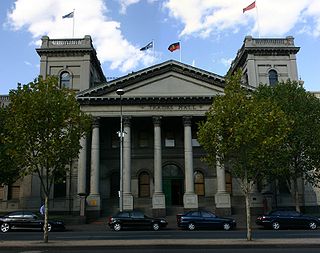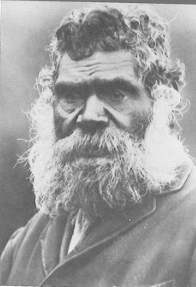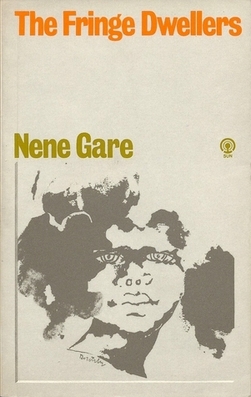See also
- Alienation (property law)
- The Fringe Dwellers, a 1986 film
- The Fringe Dwellers (novel), a 1961 novel
The term fringe dwellers has been used in Australia to describe groups of Aboriginal Australians who camp on the outskirts of towns and cities, from which they have become excluded, generally through law or land alienation as a result of colonisation. [1] In Adelaide, South Australia, the term was applied particularly in the early days of settlement to those who camped in the Adelaide park lands around the city centre. [2]
Fringe dwellers are also referred to as "Long Grassers" in contemporary times, especially in Northern Australia where year-long warm weather conditions allow itinerant Aborigines to live indefinitely on the outskirts of towns without official places of residence. [3]
The term was used for the 1961 novel The Fringe Dwellers by Western Australian author Nene Gare. [4] That book was adapted as the 1986 Australian film The Fringe Dwellers , directed by Bruce Beresford. [5]
The Kaurna people are a group of Aboriginal people whose traditional lands include the Adelaide Plains of South Australia. They were known as the Adelaide tribe by the early settlers. Kaurna culture and language were almost completely destroyed within a few decades of the British colonisation of South Australia in 1836. However, extensive documentation by early missionaries and other researchers has enabled a modern revival of both language and culture. The phrase Kaurna meyunna means "Kaurna people".

The Melbourne Fringe Festival is an annual independent arts festival in Melbourne, Australia, usually over three weeks from late September to early October. Held since 1982, the Festival includes a wide variety of art forms, including theatre, comedy, music, performance art, design, film, cabaret, digital art, and circus. Over 300 shows are held at over 100 venues from bars, clubs and independent theatres to high-profile locations.

The Ngarrindjeri people are the traditional Aboriginal Australian people of the lower Murray River, eastern Fleurieu Peninsula, and the Coorong of the southern-central area of the state of South Australia. The term Ngarrindjeri means "belonging to men", and refers to a "tribal constellation". The Ngarrindjeri actually comprised several distinct if closely related tribal groups, including the Jarildekald, Tanganekald, Meintangk and Ramindjeri, who began to form a unified cultural bloc after remnants of each separate community congregated at Raukkan, South Australia.
Parkeston is a suburb of the city of Kalgoorlie, Western Australia, located 3 kilometres (1.9 mi) east of the city centre. At the 2016 census, it had a population of 60, down from 69 in 2006. It contains the Ninga Mia Aboriginal community.

Tjilbruke is an important creation ancestor for the Kaurna people of the Adelaide plains in the Australian state of South Australia. Tjilbruke was a Kaurna man, who appeared in Kaurna Dreaming dating back about 11,000 years. The Tjilbruke Dreaming Track or Tjilbruke Dreaming Trail is a major Dreaming trail, which connects sites from within metropolitan Adelaide southwards as far as Cape Jervis, some of which are Aboriginal sacred sites of great significance.

Light Square, also known as Wauwi, is one of five public squares in the Adelaide city centre. Located in the centre of the north-western quarter of the Adelaide city centre, its southern boundary is Waymouth Street, while Currie Street crosses its northern tip, isolating about a quarter of its land. Morphett Street runs through the centre in a north–south direction.

Rymill Park / Murlawirrapurka, and numbered as Park 14, is a recreation park located in the East Park Lands of the South Australian capital of Adelaide. There is an artificial lake with rowboats for hire, a café, children's playground and rose garden, and the Adelaide Bowling Club is on the Dequetteville Terrace side. The O-Bahn passes underneath it, to emerge at the western side opposite Grenfell Street.
Australian Aboriginal culture includes a number of practices and ceremonies centered on a belief in the Dreamtime and other mythology. Reverence and respect for the land and oral traditions are emphasised. Over 300 languages and other groupings have developed a wide range of individual cultures. Due the colonization of Australia under terra nullius concept these cultures were treated as one monoculture. Australian Aboriginal art has existed for thousands of years and ranges from ancient rock art to modern watercolour landscapes. Aboriginal music has developed a number of unique instruments. Contemporary Australian Aboriginal music spans many genres. Aboriginal peoples did not develop a system of writing before colonisation, but there was a huge variety of languages, including sign languages.

Aṉangu Pitjantjatjara Yankunytjatjara, also known as APY, APY Lands or the Lands, is a large, sparsely-populated local government area (LGA) for Aboriginal people, located in the remote north west of South Australia. Some of the Aṉangu (people) of the Western Desert cultural bloc, in particular Pitjantjatjara, Yankunytjatjara and Ngaanyatjarra peoples, inhabit the Lands.

Robert Lewis Maza, known as Bob Maza, was an Aboriginal Australian actor, playwright and activist.

Arran Emrys Gare is an Australian philosopher known mainly for his work in environmental philosophy, philosophy of science, philosophy of culture and the metaphysics of process philosophy. He currently holds the position of Associate Professor in the Faculty of Life and Social Sciences at Swinburne University of Technology in Melbourne, Australia.
The Fringe Dwellers is a 1986 film directed by Bruce Beresford, based on the 1961 novel The Fringe Dwellers by Western Australian author Nene Gare. The film is about a young Aboriginal girl who dreams of life beyond the family camp that sits on the fringe of white society.

Poltpalingada Booboorowie was a prominent Aboriginal man of the Thooree clan of the Ngarrindjeri nation, who lived among the community of fringe dwellers in Adelaide, South Australia during the 1890s. He was a well-known and popular figure among Adelaide residents, who knew him as Tommy Walker, and his antics and court appearances were reported upon regularly in the newspapers.

Nene Gare was an Australian writer and artist, best known as the author of the novel The Fringe Dwellers (1961), which was made into the 1986 Australian film of the same name directed by Bruce Beresford.
Maria was a brigantine of 136 tons, built in Dublin, Ireland, and launched in 1823 as a passenger ship.
The Aboriginal South Australians are the Indigenous people who lived in South Australia prior to the British colonisation of South Australia, and their descendants and their ancestors. There are difficulties in identifying the names, territorial boundaries, and language groups of the Aboriginal peoples of South Australia, including poor record-keeping and deliberate obfuscation, so only a rough approximation can be given here.

The Fringe Dwellers is a 1961 novel written by the Western Australian author Nene Gare. It was made into a 1986 film of the same name directed by Bruce Beresford.
Jared Thomas is an Australian author of children's fiction, playwright and museum curator. Several of his books have been shortlisted for awards, and he has been awarded three writing fellowships.

Yued is a region inhabited by the Yued people, one of the fourteen groups of Noongar Aboriginal Australians who have lived in the South West corner of Western Australia for approximately 40,000 years.
Major Lancelot "Moogy" Sumner, also known as Uncle Moogy, is an Aboriginal Australian elder, cultural adviser, dancer, and environmental activist in South Australia.
...originally published in The Guardian